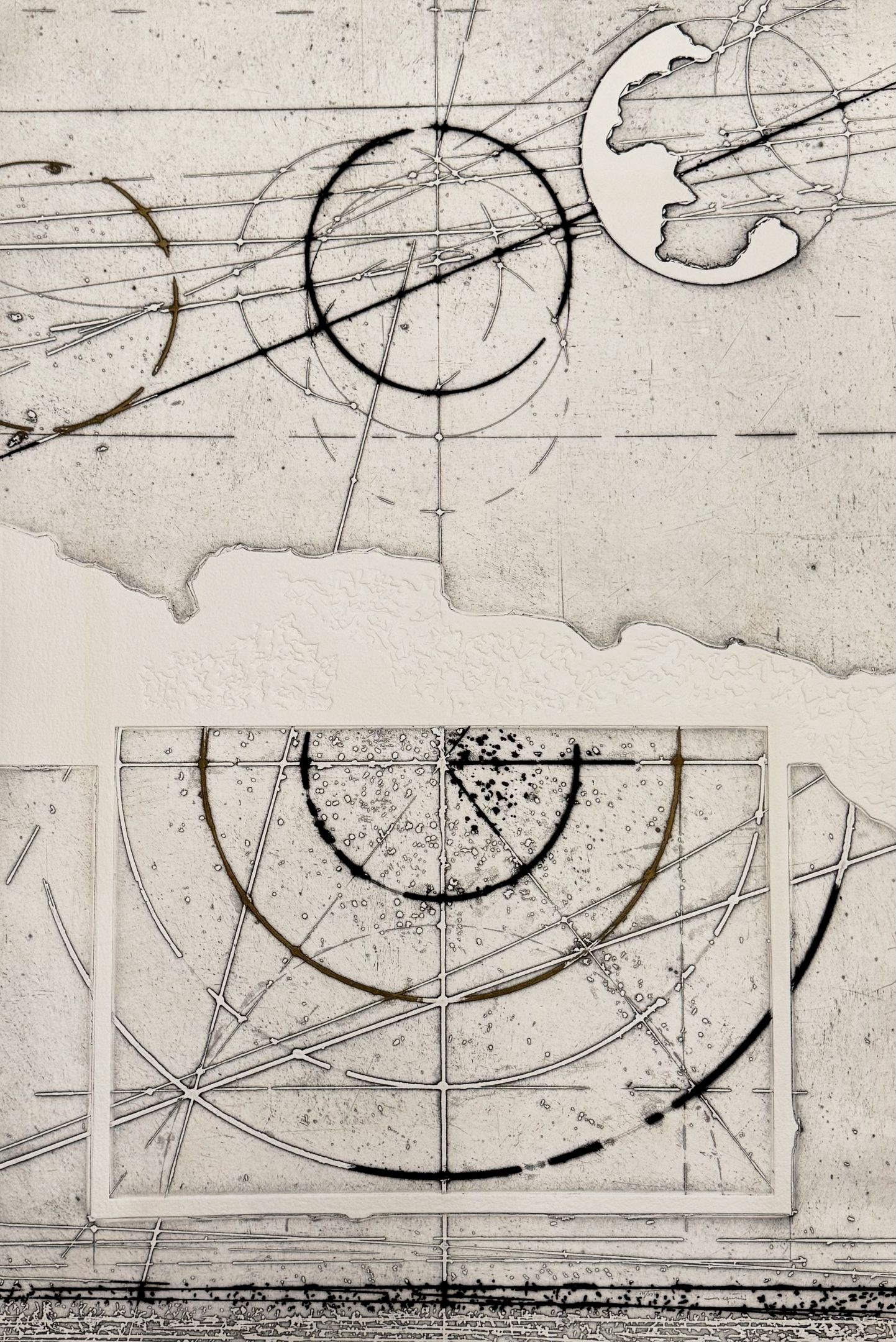



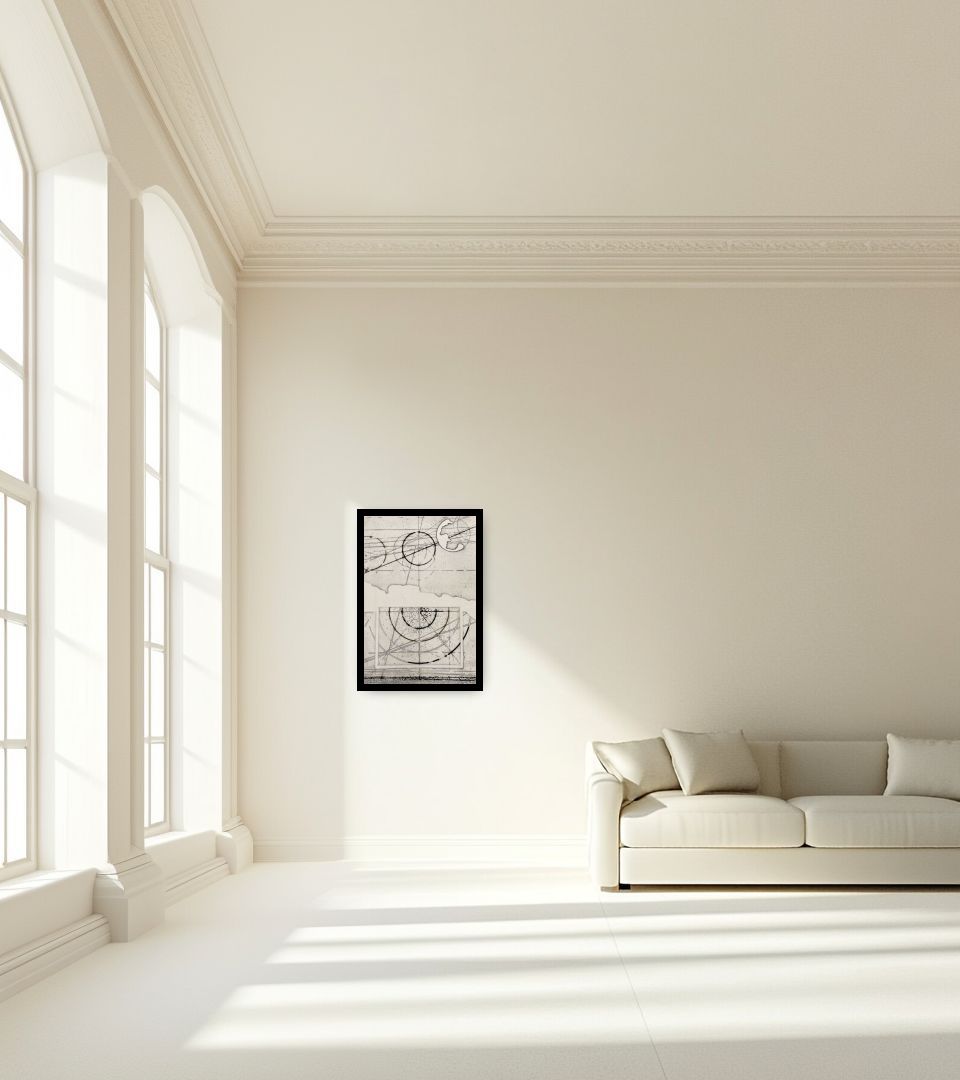
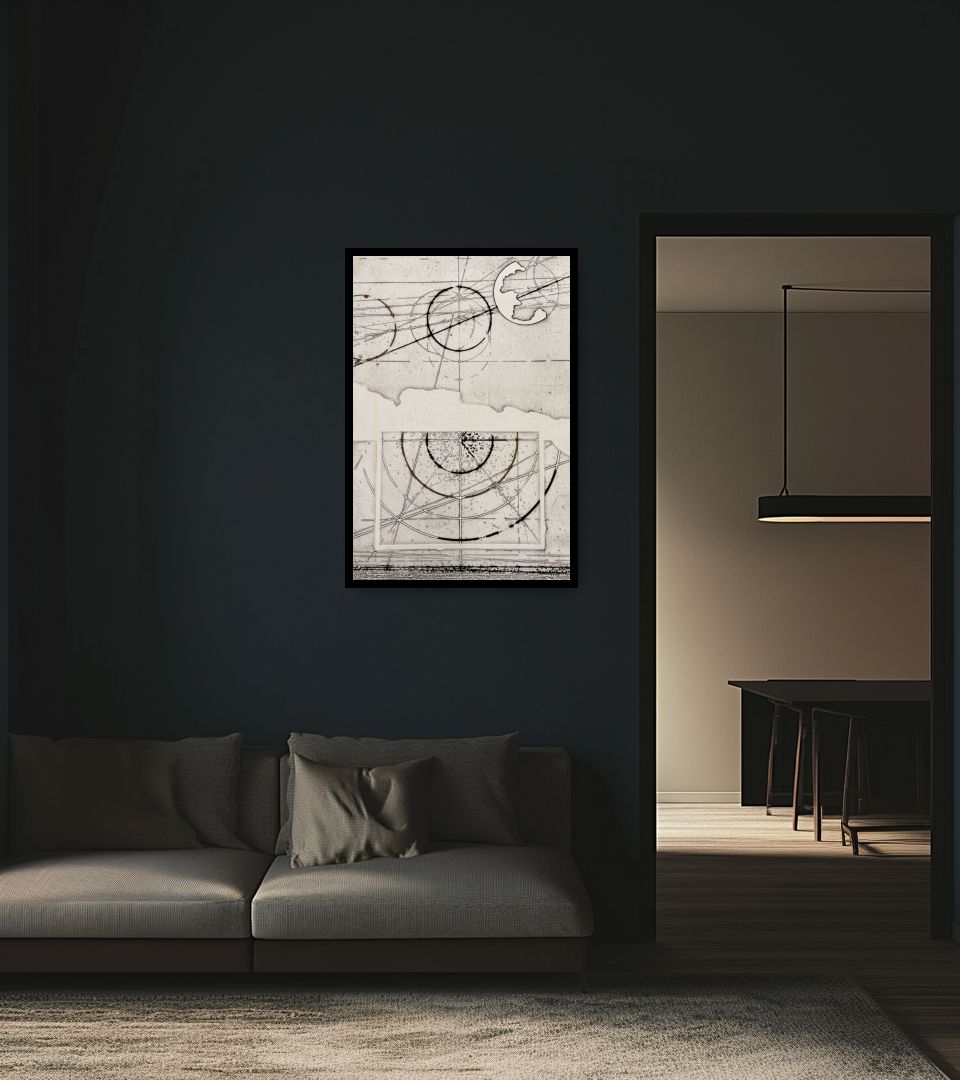
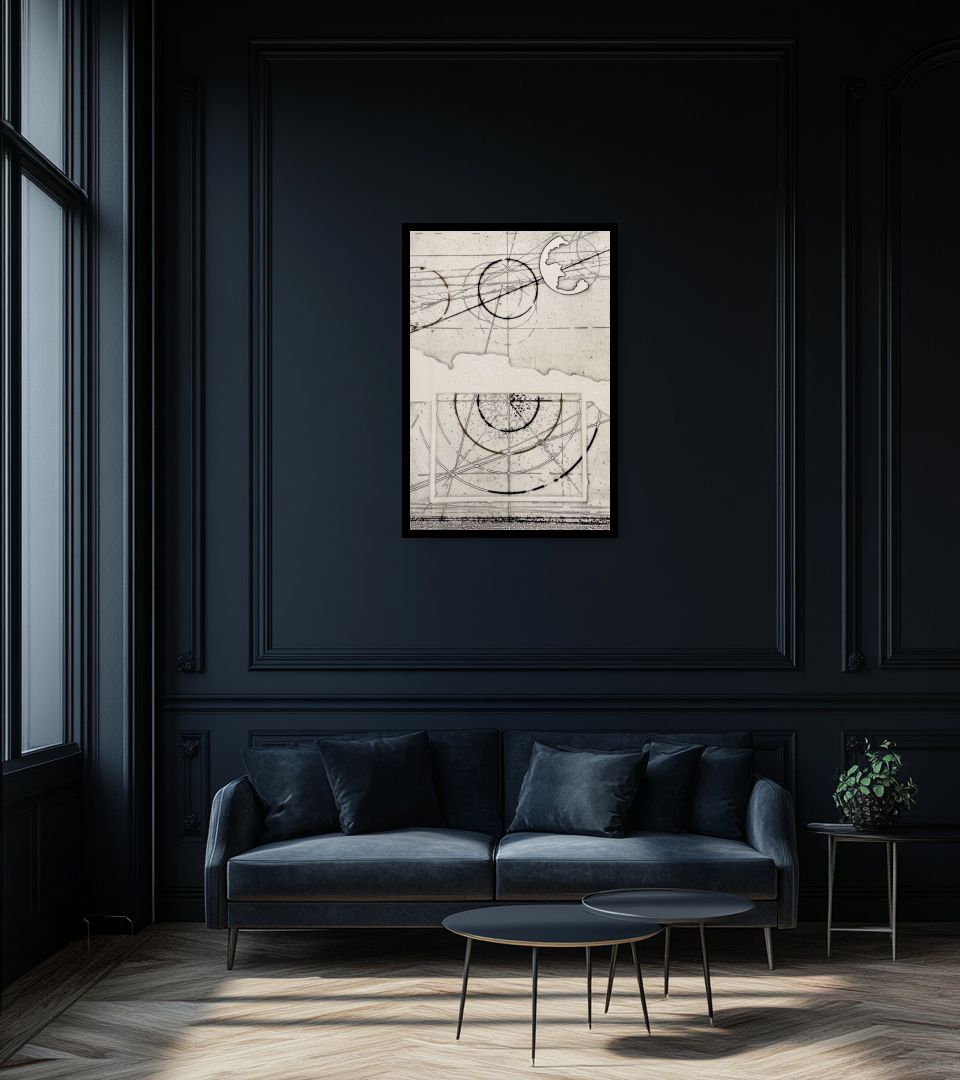
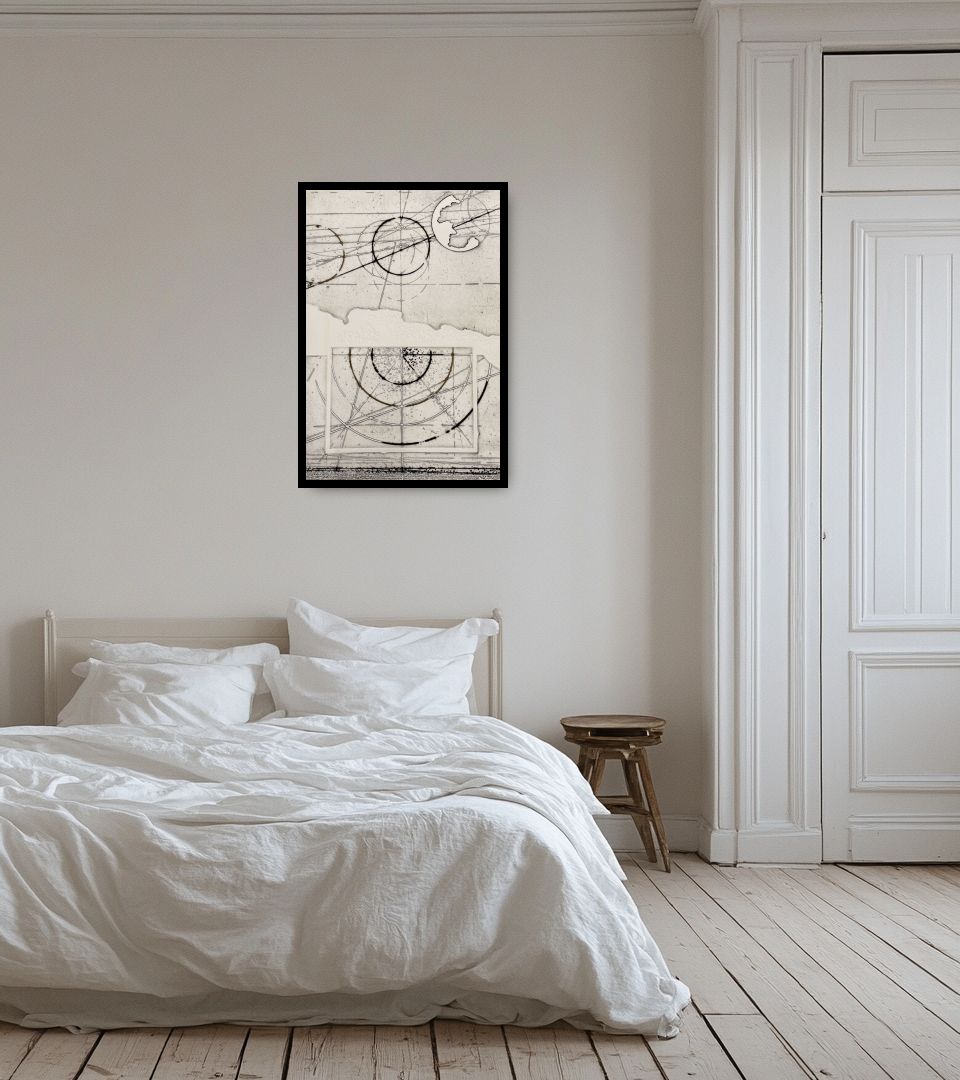
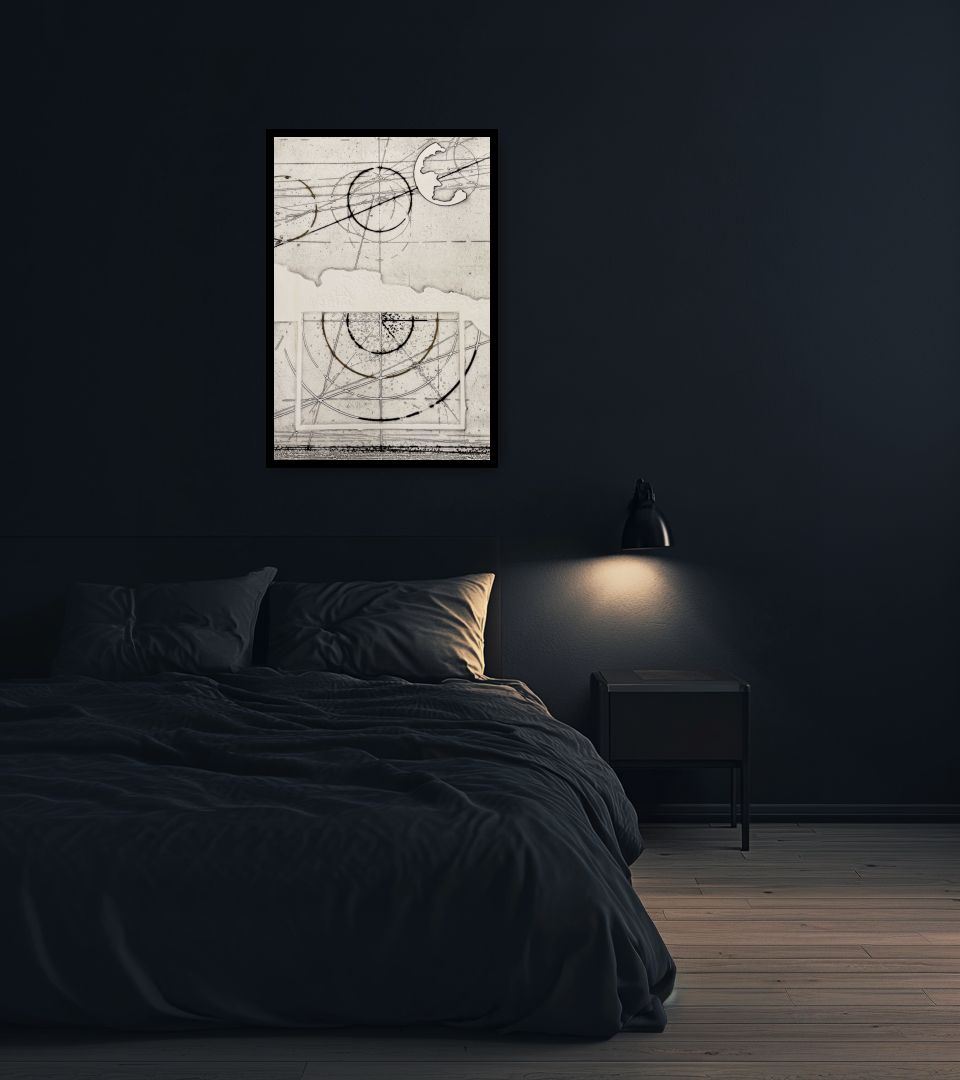
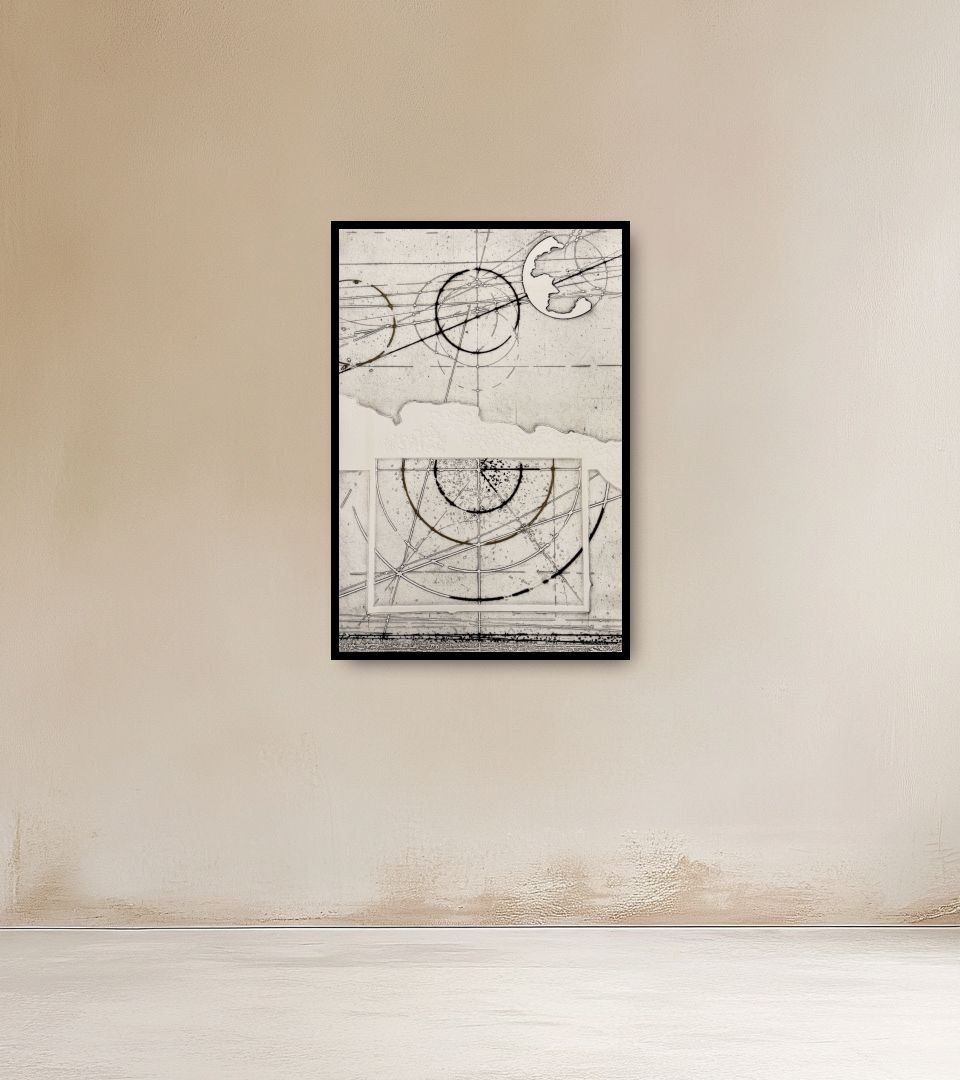

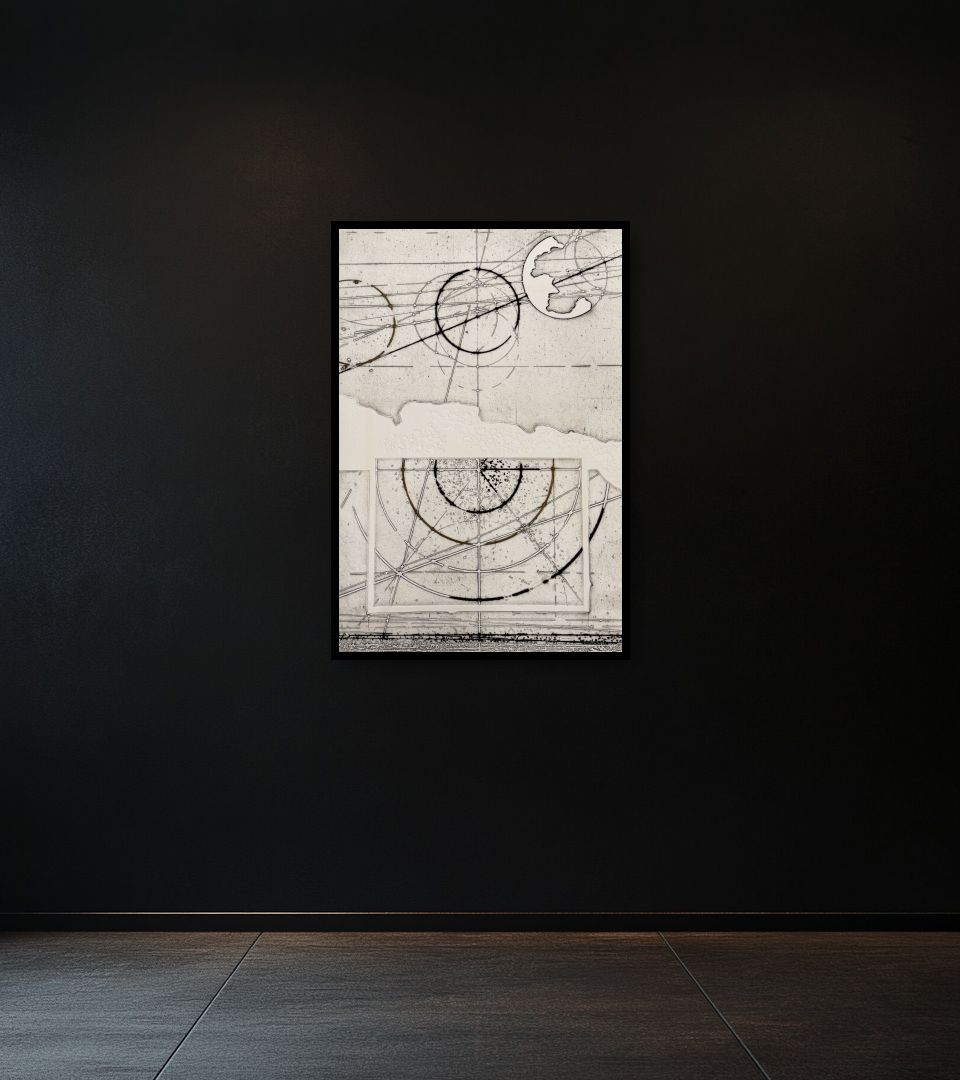
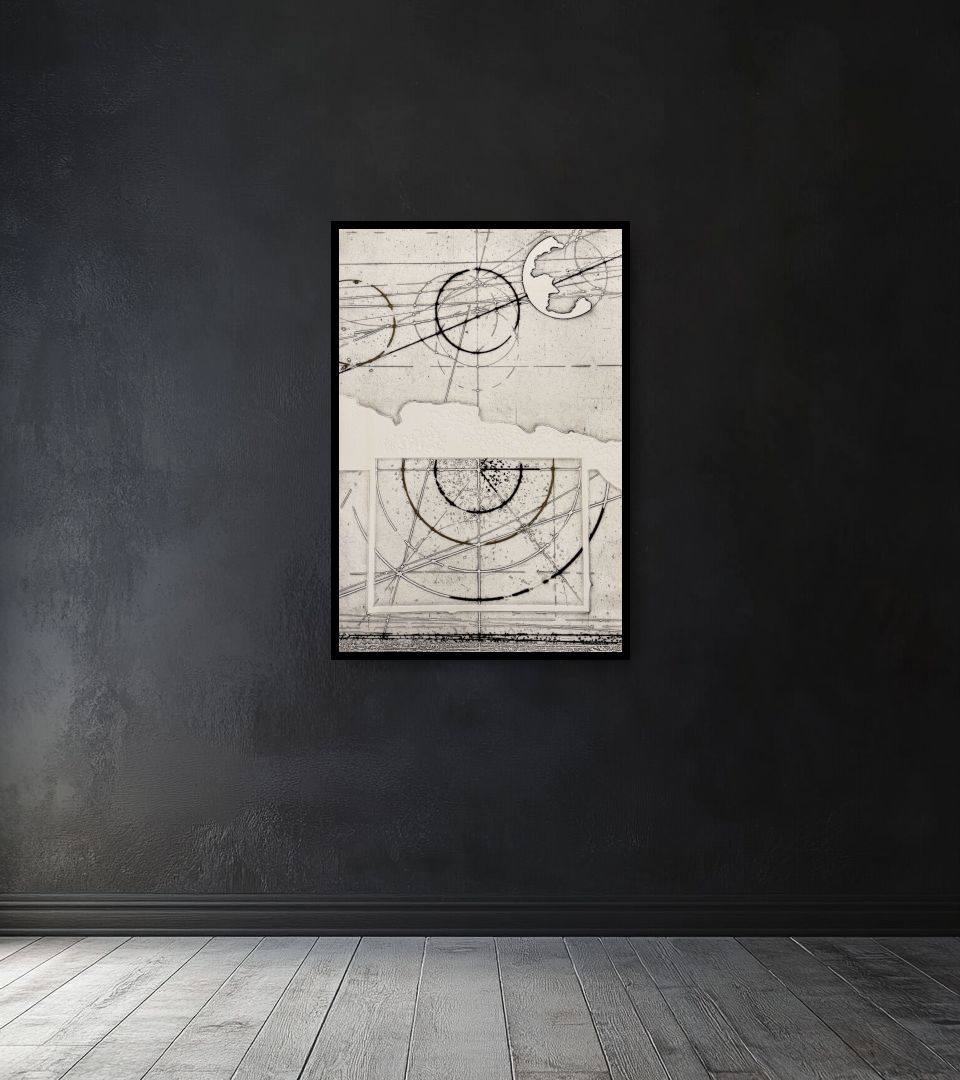

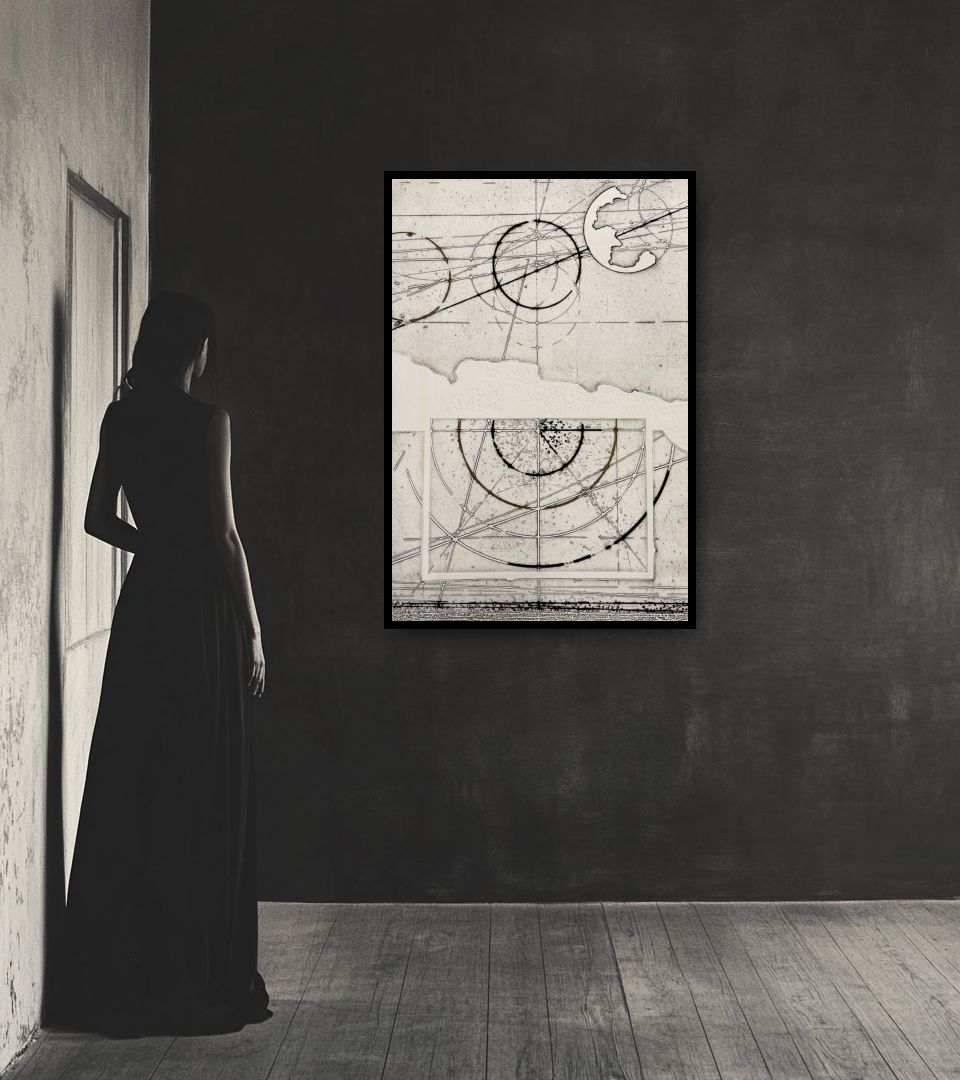
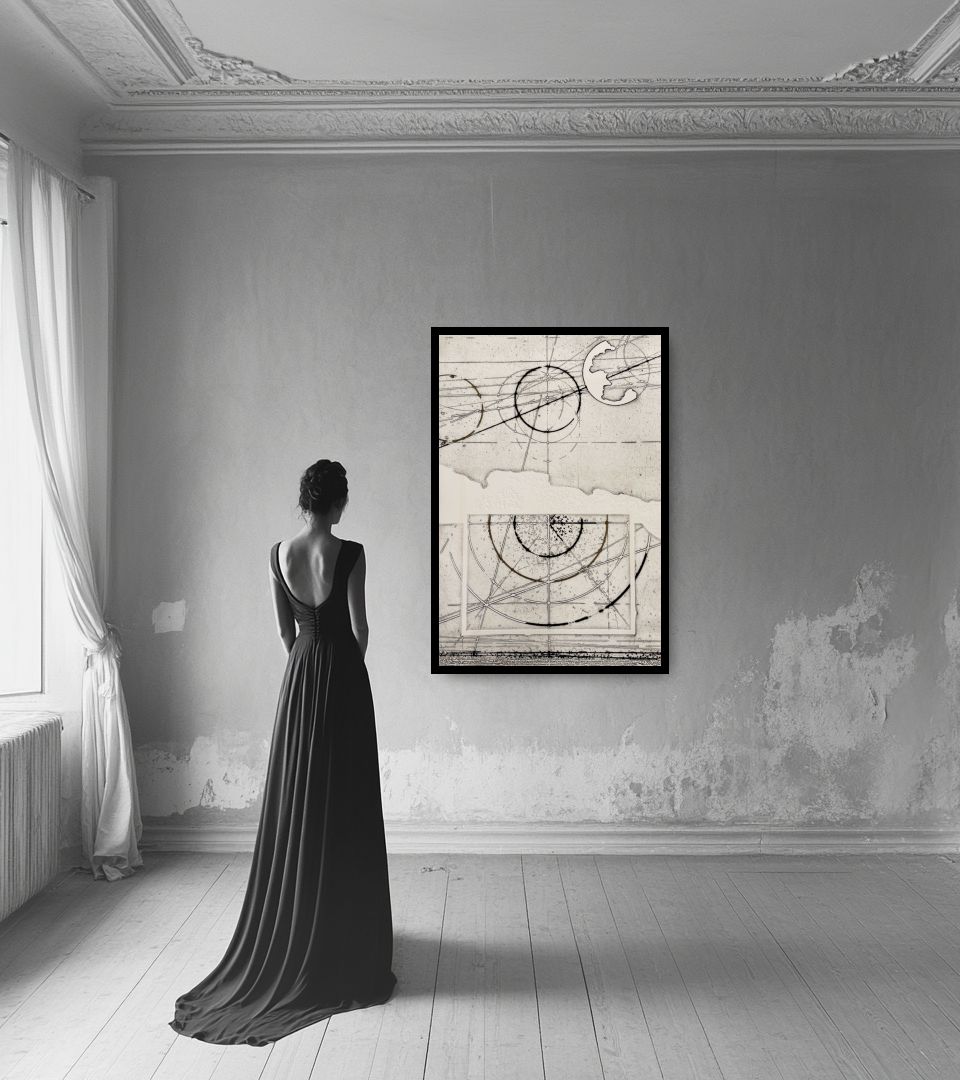
— In this artwork Valentini presents a quiet architecture of thought — a composition that feels at once scientific and meditative. His etched lines form an intricate lattice of intersecting geometries, evoking celestial diagrams and the delicate mechanics of the universe. The play between raised and recessed forms on the paper creates a tactile topography, where precision meets texture. Here, geometry ceases to be rigid; it becomes a breathing structure, alive with the pulse of contemplation.
The arrangement of arcs and axes reveals a dialogue between order and erosion, suggesting that human knowledge is always both constructed and eroded by time. Valentini’s approach feels almost archaeological: each etched trace resembles the remnant of a cosmic chart discovered in the ruins of reason. The neutral tones of the surface heighten the sense of silence, drawing attention to the fine balance between what is known and what remains ineffable.
The artwork transforms abstraction into reflection. It embodies Valentini’s lifelong fascination with the metaphysics of measurement — how the precision of a line can contain infinite ambiguity. The work stands as both a drawing and a philosophy, capturing the artist’s conviction that harmony lies not in perfection but in the dynamic equilibrium between chaos and structure, between light and the whispering void.
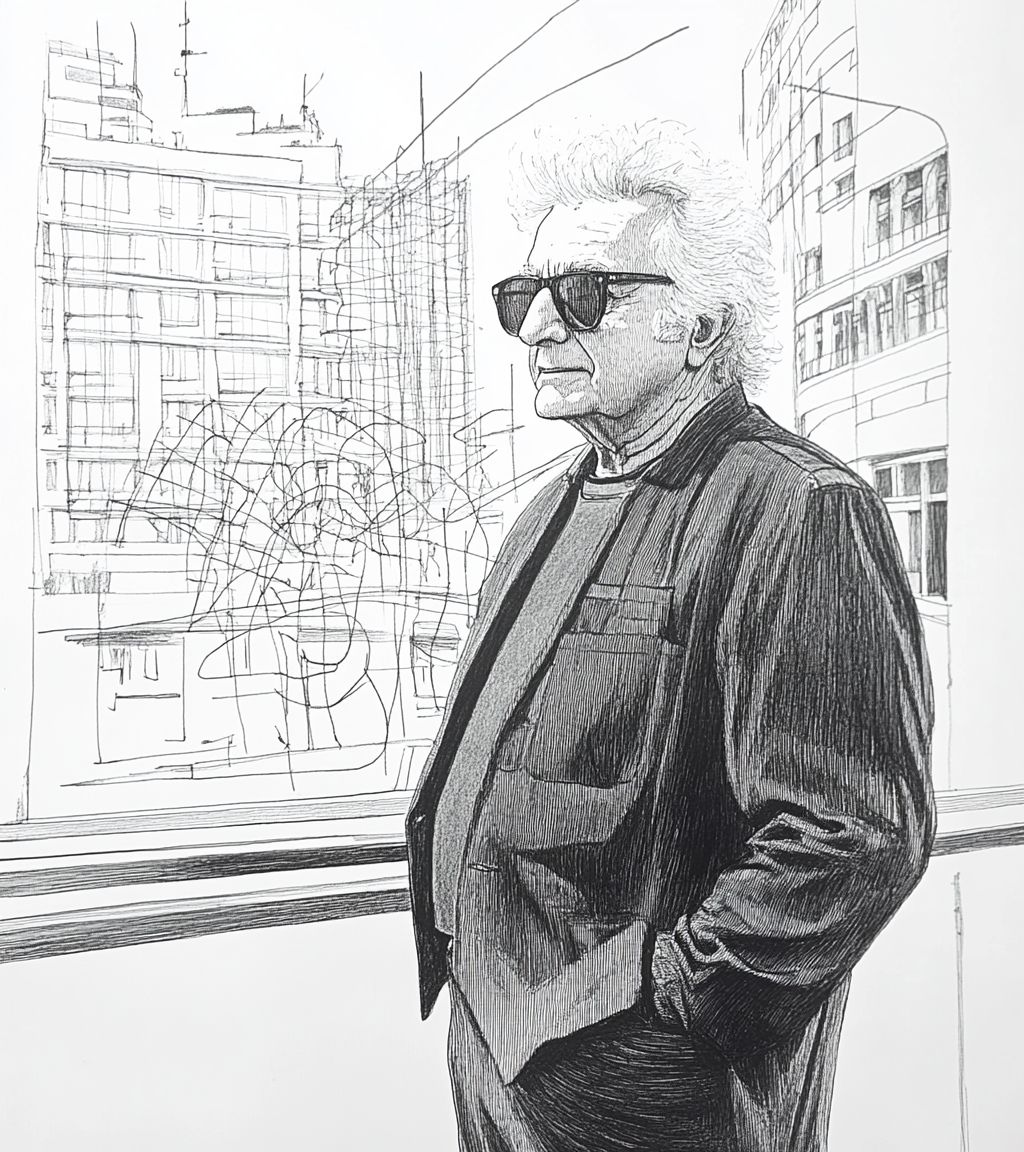
Walter Valentini’s work is known for its geometric abstraction, characterized by architectural structures, circular forms, lines, and symbolic motifs. He explored metaphysical ideas such as time, space, and order through rigorous compositions that evoke celestial mechanics, Renaissance perspective, and cosmological harmony.